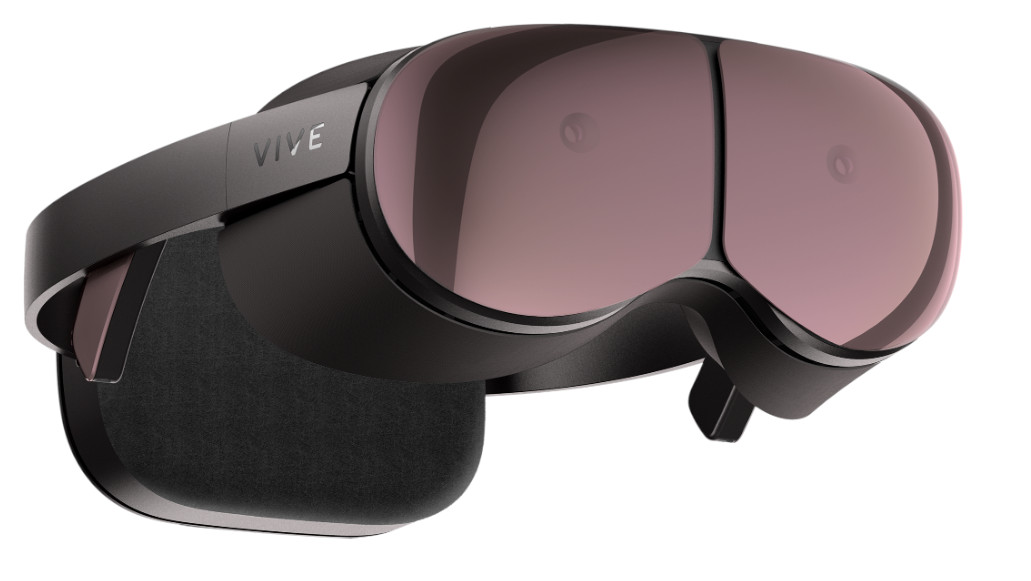HTC Vive Cosmos will soon offer mixed reality and better tracking thanks to new faceplates

After a tumultuous few months, HTC has three new products coming that it hopes will put its flagship VR headset back on the map - well, make that headsets, plural.
Today, HTC has introduced three new variations of the HTC Vive Cosmos VR headset - the Vive Cosmos Elite, Vive Cosmos XR and Vive Cosmos Play - that trade the original headset’s inside-out tracking faceplate out for one of three new faceplates, each of which offer a new, distinct feature.
What’s neat here is that each of these headsets can be purchased as a one-off product in the form of a standalone VR headset, or you can buy one of them and swap out the faceplates to get the feature set that you want.
Most importantly, all three of the new faceplates / VR headsets will be compatible with the original Vive Cosmos and Viveport App Store, as well as SteamVR, which means all of your purchases up to now are still safe.
Three faceplates, but not thrice the price
When speaking to the company’s CEO Yves Maitre, he emphasized the fact that these faceplates are meant to open the door to more experiences without the need to reinvest in a new headset every few years. The external faceplate can be swapped out as tracking hardware grows and evolves or as developers shift from full VR to AR to Mixed Reality and Augmented Virtuality, HTC’s term for experiences that are 80% digital and 20% based on objects in the real world.
That’s the premise of the Vive Cosmos XR that brings high-quality XR passthrough cameras to Vive Cosmos for the first time. Using Vive Sync, HTC will be able to bring virtual objects into real world spaces - like the boardroom or collaborative work environments - where they can then be tweaked and interacted with.
Of course, for gamers looking for a better tracking experience, Maitre is pushing the Vive Cosmos Elite that uses an external tracking faceplate and base stations to more accurately track hand movement - an issue some reviewers have cited when writing about the HTC Vive Cosmos. To that end, HTC says the faceplate by itself will be available for $199 (around £150, AU$299) later this year, or as a complete package with the HTC Vive Cosmos headset for $899 (around £699, AU$1,350).
Sign up for breaking news, reviews, opinion, top tech deals, and more.
The last headset / faceplate HTC cooked up is the Vive Cosmos Play, an entry-point for first-time VR buyers that’s supposed to bridge the gap between standalone VR headsets and PC systems with a four-camera inside-out tracking system (unlike the base Cosmos that uses six cameras) and should be more affordable than the current Vive Cosmos on the market right now.
The idea, Maitre says, is that you can start at the bottom of the food chain with the Cosmos Play, and then upgrade to the Cosmos Elite and Cosmos XR when you’re ready while still getting a great VR experience along the way.

Is three a crowd?
When Maitre and GM of North America Dan O’Brien explain it, HTC’s thinking makes sense - why should you box people in to one experience when users’ needs are so vastly different? Why not make something affordable at first and then upgrade-able over time if the technology is out there?
These are certainly good points, but you could also argue that three headsets / faceplates - on top of the Vive Pro and Vive Pro Eye for enterprise customers, plus the Vive Focus and Vive Focus Plus that have done better overseas than they have in the US and Europe - might be heading into particularly muddy waters.
All these headsets attack different price points and customer bases, but they're also dividing a really niche market with ever-more niche hardware: each of those platforms that need support, specs that need keeping up and customer education that has been, up to this point, vague at best. It’s a lot of spinning plates.
That's not to say this idea doesn't have its merits but, with so many options already out there, one has to wonder if fragmenting the market even further is the solution VR needs right now...

Project Proton - the XR Headset of the future
What HTC wasn't as ready to talk about in great detail but brought up during our chat was a new product called Project Proton.
Details are sparse but HTC says it will be a new mixed reality headset (think Augmented Virtuality again) and looks similar to ski goggles with a tinted front face.
Inside the front shield, two cameras will be able to track real-world objects and, from the images we were provided after the interview, the headset appears to offer both PC-powered and wireless modalities.
This probably would've been something HTC would've shown off at MWC 2020 this week had it not been cancelled, and for now we'll just have to wait to next month's Game Developers Conference or even E3 2020 to learn more.
- Not sure where to start with VR? Here's our list of the best VR headsets in 2020

Nick Pino is Managing Editor, TV and AV for TechRadar's sister site, Tom's Guide. Previously, he was the Senior Editor of Home Entertainment at TechRadar, covering TVs, headphones, speakers, video games, VR and streaming devices. He's also written for GamesRadar+, Official Xbox Magazine, PC Gamer and other outlets over the last decade, and he has a degree in computer science he's not using if anyone wants it.